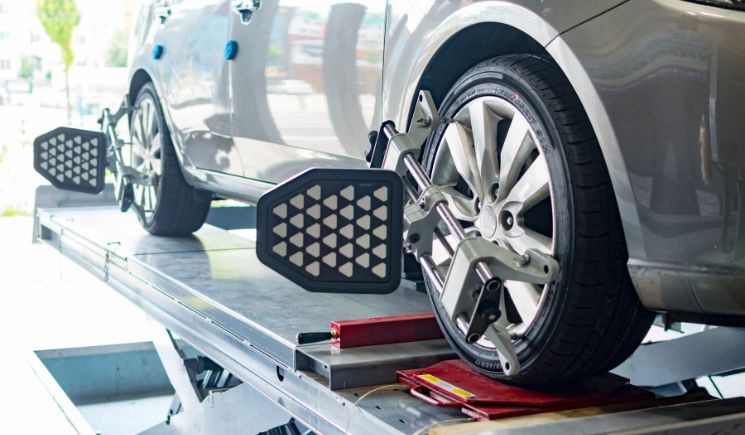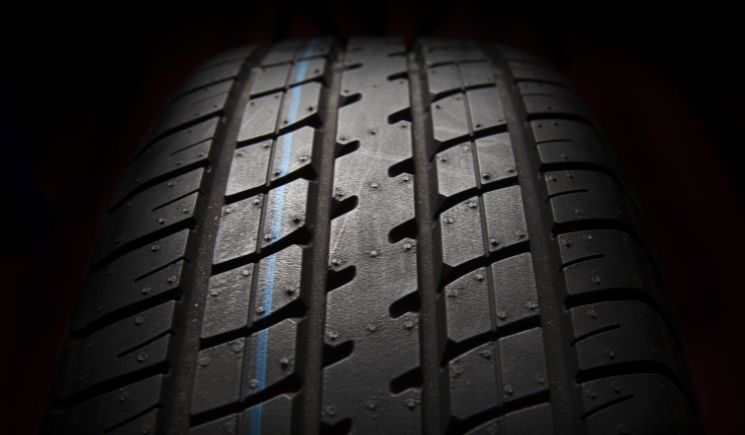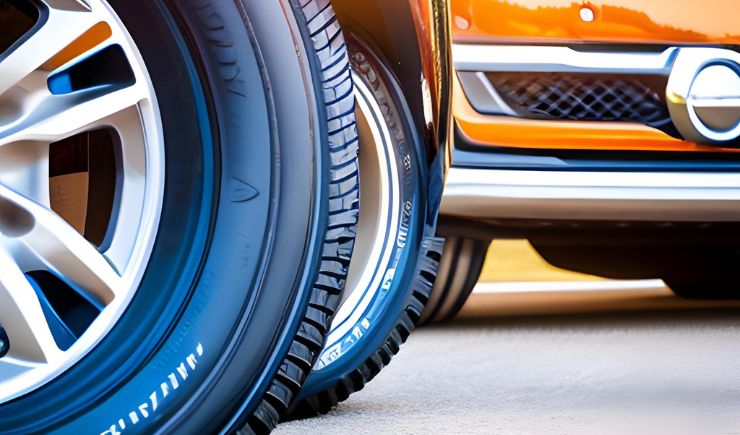Tire Balancing Beads Vs Weights

Tire balancing is an important part of maintaining a vehicle’s performance, and there are two main methods for achieving this: tire balancing beads or weights. Both have their advantages, but which one should you use?
In this article, I’ll be taking a deep dive into the pros and cons of each option so that you can make an informed decision about your own tires.
Weights have been used in tire balancing for years now, whereas bead-based solutions are relatively new to the market. They both serve to ensure even weight distribution across all four wheels – something that must be done regularly to reduce vibration and improve ride comfort.
But what do each offer in terms of cost effectiveness and ease of installation? Keep reading to find out!
Table of Contents
- How Do Tire Balancing Beads And Weights Work?
- Advantages Of Tire Balancing Beads
- Disadvantages Of Tire Balancing Beads
- Advantages Of Weights
- Disadvantages Of Weights
- Frequently Asked Questions
- How Much Does It Cost To Install Tire Balancing Beads Or Weights?
- Are Tire Balancing Beads And Weights Compatible With All Types Of Tires?
- How Long Do Tire Balancing Beads And Weights Last?
- Are Tire Balancing Beads And Weights Difficult To Install?
- Is There A Significant Difference In The Ride Quality Between Tire Balancing Beads And Weights?
- Conclusion
How Do Tire Balancing Beads And Weights Work?
Tire balancing beads and weights are both used to balance a car’s tires. Balancing your tires is important in order to ensure the safety of yourself, other drivers around you, and even your vehicle itself.
To understand how tire balancing works, it helps to know what causes unbalanced tires in the first place. Unbalanced tires typically occur when certain areas of the tire or wheel assembly become damaged or worn over time – this can be caused by things like unevenly distributed weight from cargo loads, incorrect inflation pressures, road hazards, and more.
Weights are physical objects that are attached directly to the outer rim of a wheel assembly and help counteract any imbalances caused by factors such as those mentioned earlier.
Tire balancing beads on the other hand work differently; they’re added into the inner cavity of each tire before being inflated with air. The tiny ceramic beads then settle within each tire in their natural position based on any imbalance present – this helps reduce vibrations while also helping maintain proper contact between your tires and the ground surface.
Balancing your tires not only provides smoother rides but also helps extend their lifespan too since an unbalanced car will cause excessive wear due to poor traction control and higher fuel consumption rates. With these benefits in mind, let’s take a look at some advantages specific to using tire balancing beads versus traditional weights for automobile wheels.
Advantages Of Tire Balancing Beads
One of the most effective ways to balance tires is by using tire balancing beads. These small, yet mighty little beads act as a centrifugal force that can help ensure your car runs smoothly and safely on any surface. It’s like having a miniature team of pit crew members working diligently inside each wheel!
Not only are these tiny champions easy to install, but they also provide long-term benefits for your vehicle. Tire balancing beads offer better handling characteristics compared to traditional weights because the weight is evenly distributed around the circumference of the wheel rim.
This helps keep the tires balanced even when temperature changes or during hard cornering maneuvers.
The overall ride quality will be much smoother than with static weights and you won’t have to worry about them falling off over time either! Tire balancing beads give drivers peace of mind knowing their cars are running safe and sound out there on the roads. By eliminating vibration from unbalanced wheels, drivers can enjoy more comfortable rides and improved fuel efficiency too!
With all these advantages in tow, it’s no wonder why so many people opt for tire balancing beads instead of traditional weights. As we move onto discussing disadvantages of tire balancing beads, it’s important to remember that although this method does come with some drawbacks, its pros far outweigh its cons.
Disadvantages Of Tire Balancing Beads
Tire balancing beads have become a popular choice for tire balance and are often promoted as an easier option than weights. However, there are several drawbacks to using them which should be considered before making the switch.
First of all, it is harder to check whether or not the amount of tire balancing beads used was correct. Without checking that enough beads were added, tires may still be unbalanced and cause vibration in the vehicle.
Additionally, since they cannot be seen when on the wheel rim, adjusting any incorrect bead placement can prove difficult if not impossible without complete disassembly of the wheel assembly.
Furthermore, due to their small size and weight, some road debris such as stones can dislodge these little particles from the wheels creating an uneven distribution or causing a misbalance again.
As a result, additional tire balancing material must be constantly replenished during service intervals leading to higher servicing costs over time.
They do not provide dynamic balance correction while driving resulting in potentially increased wear on suspension components;
If improperly installed they can block valve stems reducing air pressure required by tires;
Beads contaminate rims and valves since they contain barium sulfate which is corrosive;
Depending on type of bead chosen, some may require more frequent services compared to traditional lead-weight balancing;
Tire Balancing Beads will not work well with wide based tires because many models lack sufficient surface area for effective adhesion.
Ultimately, although tire balancing beads offer convenience due to no visible hardware being attached outside of wheels but careful consideration needs to taken into account prior selecting this method for your auto maintenance needs. Moving onto advantages of weights…
Advantages Of Weights
When it comes to tire balancing, there is no denying the advantages of using weights over beads. According to industry statistics, nearly 80% of all service shops prefer wheel weights for their tire balancing needs due to its superior performance and ease of use.
Wheel weights make sure that tires are balanced efficiently and effectively; they are also vibration-resistant while driving at different speeds. This helps maintain proper control on the roads without compromising your safety.
Furthermore, wheel weights come with easy installation process so you don’t have to worry about spending too much time or effort during setup.
In my experience as a tire balancer, I’ve seen how quickly wheel weights improve vehicle handling after installation. They offer precision accuracy when it comes to attaining ideal weight distribution around the entire circumference of each wheel which leads to improved traction and braking ability.
Moving forward, let’s consider the disadvantages associated with this type of option…
Disadvantages Of Weights
Having discussed the advantages of weights when it comes to tire balancing, let’s look at some of the drawbacks. It should be noted that there are many instances where using weights can be beneficial; however, they come with their own set of disadvantages as well:
- Weights require additional time and effort for installation since each one has to be individually placed on the wheel by hand.
- They can also restrict certain types of tires from being used due to size or weight restrictions.
- The materials in which the weights are made can corrode over time if exposed to elements like salt, water or dirt.
- Unless an adhesive is applied, the weights have a tendency to come off during operation resulting in vibration or noise.
- Weights create imbalance moments while driving which could cause accelerated wear on components within your vehicle’s suspension system.
In comparison to tire balancing beads, using weights makes sense only under certain circumstances such as light-weight vehicles with standard run flats.
If you decide that this is the right choice for your needs then make sure you take extra precautionary steps in order to ensure proper installation and longevity for years to come!
Frequently Asked Questions
How Much Does It Cost To Install Tire Balancing Beads Or Weights?
Installing tire balancing beads or weights is an important part of maintaining the life and performance of your tires, but how much does it cost?
Generally speaking, you can expect to pay between $20-$50 for installation depending on a few factors like the type of vehicle you have and whether you’re using balancing beads or weights.
Balancing beads are usually more affordable than traditional wheel weights as there’s no labor required in attaching them, which helps keep costs down.
Are Tire Balancing Beads And Weights Compatible With All Types Of Tires?
Tire balancing is an important aspect of maintaining your vehicle’s tires. It ensures even wear and tear on the tire, which can help maximize its life span.
When it comes to choosing between tire balancing beads or weights for your vehicle, you may be wondering if they are compatible with all types of tires. The answer is yes! Both tire balancing beads and weights will work on any type of tire as long as they’re installed correctly.
Keep in mind that different sizes and models of weights have different levels of compatibility so make sure to check what size works best for your specific model before making a purchase.
How Long Do Tire Balancing Beads And Weights Last?
When it comes to tire balancing, the longevity of beads and weights largely depends on the quality of the product.
Generally speaking, high-quality materials can last up to 50,000 miles before they need replacing or adjustment.
On average though, you should expect around 10,000 miles of use with proper maintenance.
As a tire expert I would recommend checking your tires regularly for signs of wear and tear as this will help ensure that any balancing solution you implement lasts longer.
Are Tire Balancing Beads And Weights Difficult To Install?
Installing tire balancing beads and weights is a relatively simple process that doesn’t require any special tools or experience. In most cases, all you need is the product itself and a few minutes of your time.
With both bead-style and weight-style balancers, simply follow the instructions on the packaging to attach them to the wheel rim in the correct location and orientation. You’ll want to make sure it’s done right since improper installation can lead to poor balance performance.
Is There A Significant Difference In The Ride Quality Between Tire Balancing Beads And Weights?
When it comes to achieving the best ride quality, there’s a significant difference between tire balancing beads and weights.
Weights are more commonly used because of their low cost and easy installation process, but they can cause an uneven distribution of weight around the wheel which may lead to vibration in your vehicle.
Tire balancing beads offer superior results due to their ability to spread evenly across the entire circumference of the tire – resulting in less vibration, improved gas mileage and extended tire life.
Conclusion
When it comes to balancing tires, there is no one-size-fits-all answer. It’s important to consider the type of tire you have and your budget before making a decision.
Weights may be more cost effective in the short term but when compared to tire balancing beads, they are like eating fast food – quick and easy but not always good for you or your wallet.
Tire balancing beads provide long lasting results that can make even an old car feel like it’s riding on air. The installation process may require some effort, but once installed you’ll enjoy smoother rides with fewer vibrations for many miles ahead.






